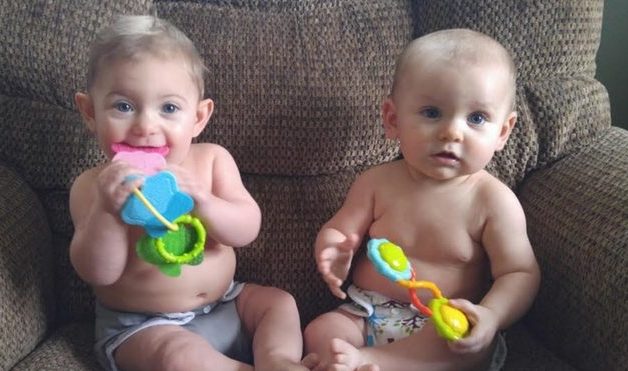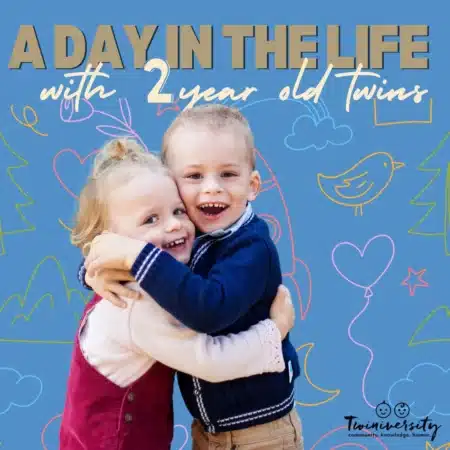Last updated on July 30th, 2024 at 03:45 pm
Twins are not exactly easy on the family budget… or the family carbon footprint. The everyday struggles of being torn in multiple directions by your multiples make it difficult to do the more frugal, greener things you may have done pre-multiples. Eventually, families find their groove and become themselves again – only new, improved, more patient, resilient, efficient versions of themselves!
We started cloth diapering with our second child. We were trying to be more green, save money, and avoid the awful rashes our firstborn often suffered. Switching to cloth helped achieve all of these things, so naturally we continued with our third child. When our twins came along, we waited several months before attempting cloth. The newborn stage was overwhelming enough without extra laundry, but when the girls turned five months old, we decided we could make it work.
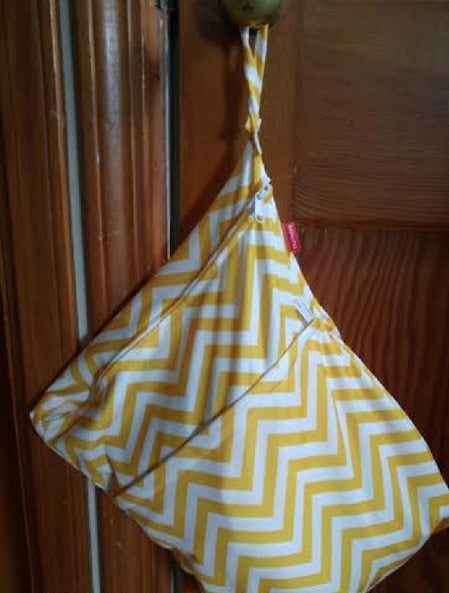
The secret to cloth diapering has been to keep it simple. We don’t have the space for a changing table or a closet to dedicate to a stinky diaper pail, so we devised something easy. Clean diapers are stored in a large Rubbermaid bin, cloth wipes (baby washcloths, used with a spray bottle of water) in a basket beside the bin. On the doorknob of the closet nearby, hangs a medium-sized waterproof wet bag. Wet diapers are placed in this bag and soiled diapers are rinsed into the toilet with a spray nozzle called a diaper sprayer and placed in the bag. (An alternative to spraying off soiled diapers is using flushable diaper liners inside the diaper to quickly remove stool. Also, note that liquid or nearly liquid stool need not be removed prior to machine washing.) When the bag is full, we just zip it up and toss it into the laundry area in the basement.
A wash routine is the most important component of cloth diapering. If the diapers do not get properly cleaned they can cause rashes, stink, staining and a lot of discouragement. At the end of the day, typically two and a half bags are full and this makes a nice sized wash load. We dump the bags of diapers and wipes into the washer and toss the wet bags in too
A proper wash routine has two washes with detergent. A pre-wash is done to get the bulk of the pee and stool off and a second main wash is done to clean the diapers. Each wash has detergent, just varying amounts, and the wash time will also vary. A good detergent would be anything made for sensitive skin.
After a tumble in the dryer (we hang diaper covers and wet bags to dry) the diapers are ready to go again – no trip to the store or trash needed.
What Kind of Cloth Diapers Are Best?
I can recommend a few brands from experience, although different families have different preferences. First off, I would always argue that hands down, diapers that secure with snaps are better than those that secure with Velcro. Velcro covers are a bit quicker to secure, but the “stick” only lasts for so long. Snaps last and last. Our Velcro diapers lasted through our son… and then they were useless. Our snap covers have lasted throughout.
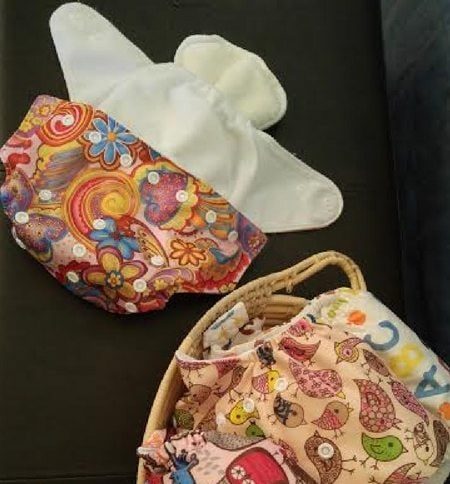
For pre-fold covers, I prefer Thirsties snap covers. They fit nicely around babies legs without binding, the inside is wipeable, and they rarely leak. They are also reasonably priced. Sizing is generous. For pocket diapers, Nicki’s diapers one sized pocket diapers are affordable, well made, and feature a double row of snaps for a secure fit.
One of my other favorite “diaper systems” is called Leekalos Cloth Diapers. They have covers that snap and you can use microfiber inserts. Changing simply requires snapping in a new insert – easy peasy! It is a more costly system, but parents swear by its simplicity. We use a combination of cotton pre-fold diapers with waterproof covers, and pocket diapers, which require an absorbent insert to be stuffed into a cover with a pocket. The pocket diapers go on and off like a disposable and are great for traveling or babysitters. At home, we prefer pre-folds and covers. In our experience, they leak less often and wash up nicely. Folding them around baby required a bit of a learning curve, but now that the muscle memory is in place, its simple.
Step by Step, This Is How We Diaper Our Girls With Prefold Diapers and Covers:
Step One – Lay diaper on cover under baby, like this:
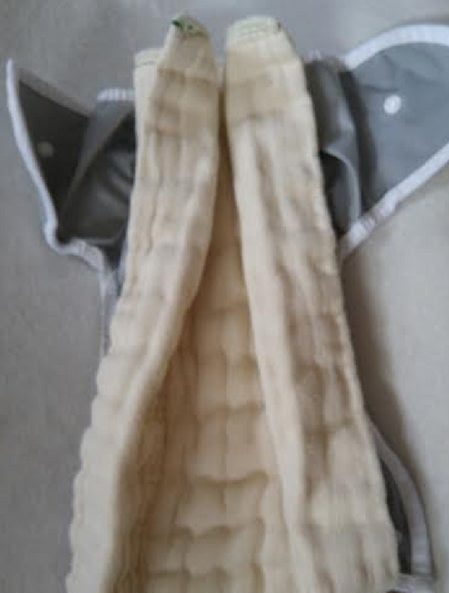
Step Two – Fold diaper up over baby
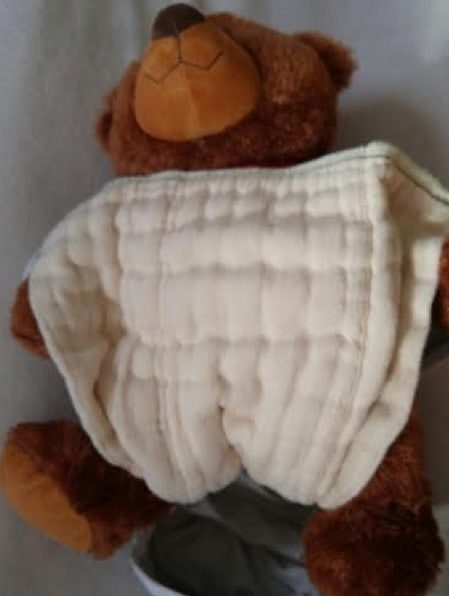
Step Three – Flip excess length down, if necessary
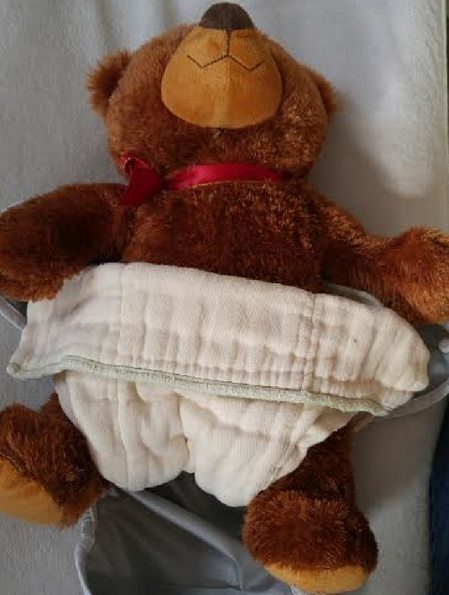
Step Four – Pull corner from back and overlap front corner
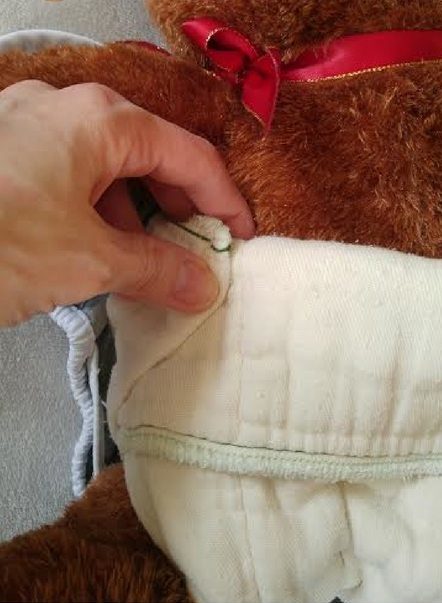
Step Five – Secure diaper cover on first side (pins are not necessary, the cover will hold it)
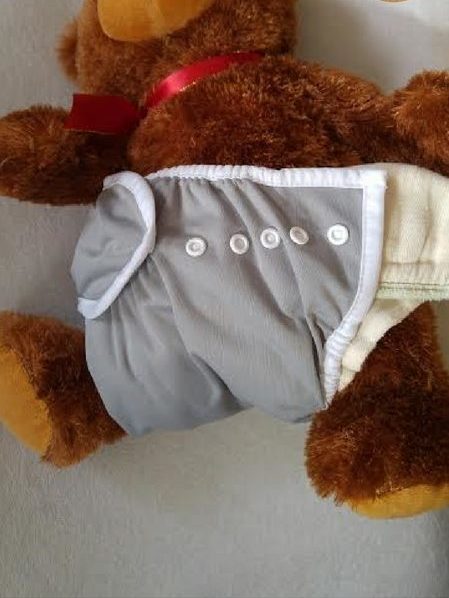
Step Six – Repeat Steps four and five on the second side
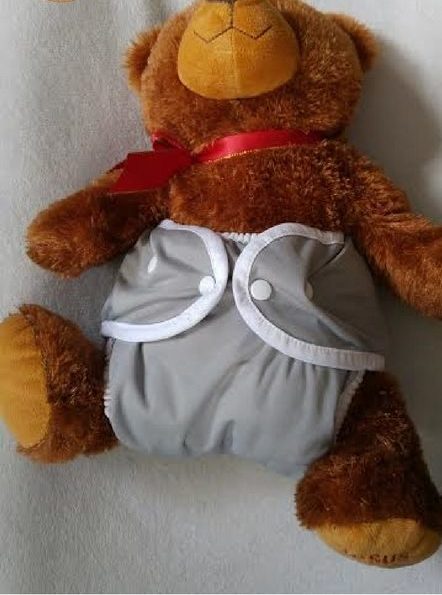
With our cloth diapers we rarely have the poo “blowout” experience we had with disposables. The reusable, soft elastic bindings around the waist and legs hold soiled messes in better than disposable paper diapers. We do notice more leakage with wet diapers, however, if we don’t change our girls promptly. For this reason, we use disposables (Earth’s Best brand works great) overnight, although with our singletons we doubled up cloth layers for overnight, and most nights it worked just fine.
Cloth diapering twins, even with an expensive system, can save you hundreds of dollars of the course of your diapering years. The upfront cost is more, so I would suggest purchasing a small “stash” and trying it out for the period of time it would take to recoup the cost. Nickisdiapers.com offers a number of starter packages. If that trial period goes well, maybe purchase a few more and go all in! Using the same diapers for future children, if your family grows, compounds the savings. We have shared diapers with friends and relatives, further stretching our money. Some find this gross… it’s really a matter of your comfort level. Cloth diapers really do come quite clean when washed properly. The dryer further sanitizes them, and hanging them in the sun takes care of many stains.
We started cloth diapering our kids nearly ten years ago out of concern for the waste we were producing day after day. We have found it to be easier than expected and still manageable, even with twins.

Anne Schmidt is a stay at home mother of five, including three school age kids and fraternal twin girls born in May of 2016. A self-proclaimed book nerd and former school librarian, Anne currently spends her time mixing up her kids’ names, tripping over the dog, and trying to convince the laundry to wash itself.

